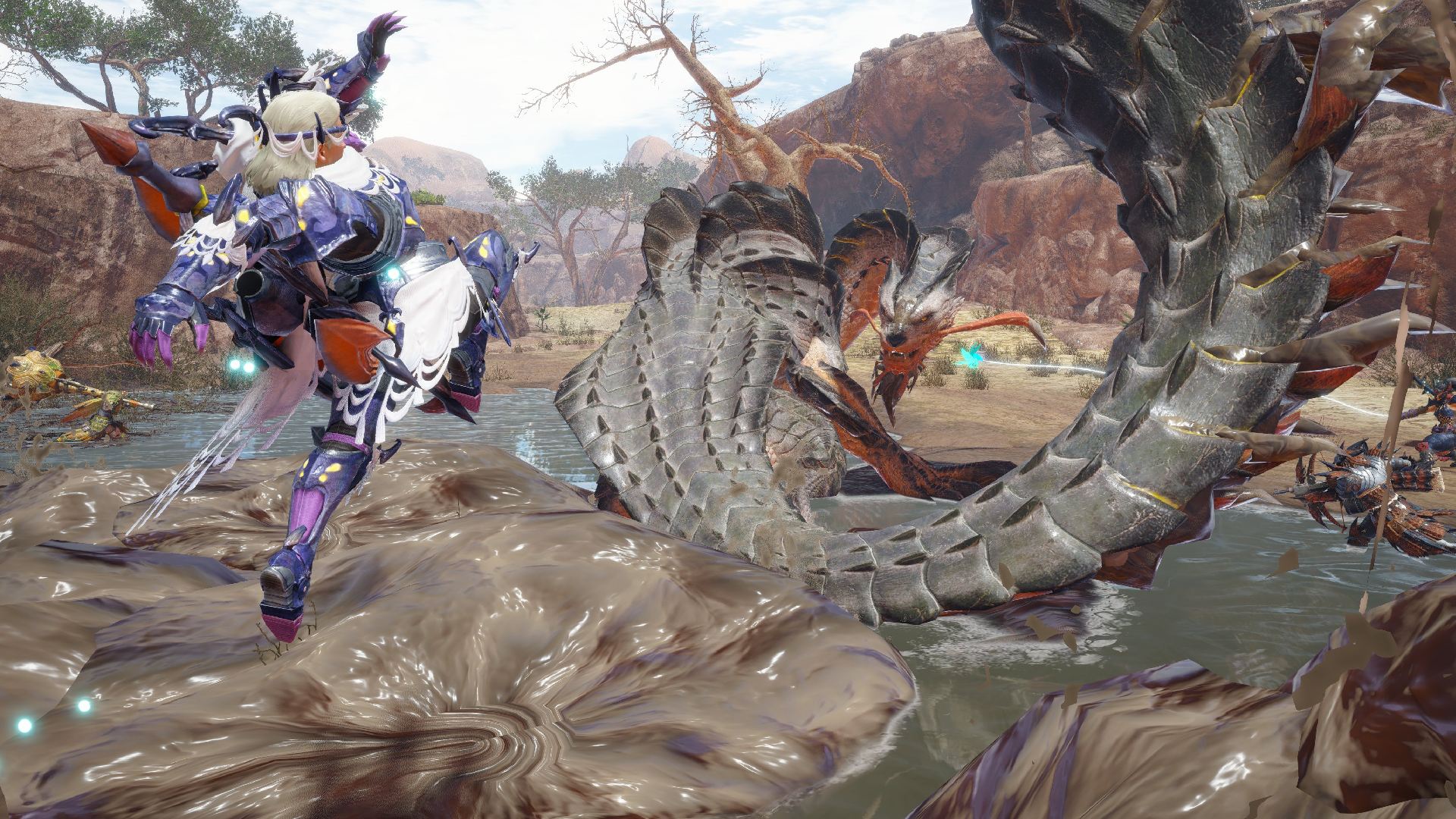Our Verdict
Monster Hunter Rise’s fights are as enjoyable as ever with vastly expanded combat thanks to the new Wirebug. However, the removal of tutorials, and an overabundance of systems means the game isn’t as approachable as it could be.
Like many, I was captured by the grip of the Monster Hunter franchise when Monster Hunter World was released, so when I booted up Monster Hunter Rise for the first time on PS5, I expected something quite similar. And, for the most part, it is. There’s tough and engaging gameplay, dynamic satisfying fights with monsters, and a vast level of depth to each and every encounter now enhanced with the new Wirebug movement mechanics.
The game feels like a huge improvement from its predecessor when it comes to mechanics, making the game more compelling than ever before, something that largely comes down to the way the Wirebug is used.
Ultimately, the Wirebug is the star of the show in Rise, allowing you to sling yourself around the map wherever you like, dodge monsters’ attacks, or land a counter with a special enhanced attack. It evolves the tried and tested combat of the series in a new, exciting, and valuable way. Fights feel far more fun in Rise thanks to the added mobility and the less punishing gameplay it provides.
You can move around the map faster and climb faster with it, and it speeds up the game just enough to offer a distinctly different experience from what we saw in the last game. I didn’t expect to enjoy this mechanic quite this much and I think the value it brings is almost a necessity for future games. In fact, I can’t imagine playing another Monster Hunter game again without this kind of flexibility.
Similarly, the enhanced movement has been incorporated into other aspects of the game that make the whole experience feel less gruelling. You now have a Palamute that joins you on hunts alongside your Palico and you can ride them around the map to speed your way around, rather than having to walk or run around the vast open areas of each biome.
The map design has also been expanded both vertically and horizontally with wider areas and exploration zones, and you now have the ability to climb pretty much any cliff, giving you far more options for traversal than ever before.
While playing Rise on the PS5 is new to me, the game itself isn’t; I briefly tried it on the Nintendo Switch back when it first launched, but I quickly gave up. On the PS5, I was able to experience the game properly at 4K and 60 FPS, which is an absolute game changer. I was able to see everything clearly and take part in fights without the visuals and performance being hampered by what the Switch is capable of outputting. It reinforced my view that the games really are one of the best action series out there, it’s just a shame that some of the other features on the technical side of things let it down.
The adaptive triggers, for example, were a real pain point for me. While they usually add an extra dynamic to games, in Monster Hunter Rise, I found them to be incredibly uncomfortable, halting the natural flow of a combo during combat. They were so jarring that I was forced to turn them off to enjoy combat – something I’ve never had to do in a PS5 game before.
I was also stunned to learn that a lot of the introductory missions and onboarding that made World so approachable is nowhere to be found in Rise. The game starts off pretty abruptly and just throws you into hunts, rather than being built around a core main story which just progresses by itself as you play and meet an arbitrary number of quest completions. This leaves the game’s narrative, the Hub, and the characters feeling largely disconnected from a lot of your actions.
Similarly, the amount of text-heavy pop-ups explaining new mechanics and the speed at which those new mechanics were introduced was extremely overwhelming. I felt like I was being bombarded with bloat and without an effective explanation of what the Argosy, Meowceneraies, and more are used for and why they are useful for me, I mostly just ignored them in favour of getting back into the action.
This omission and not welcoming new players to the series who didn’t dabble in Monster Hunter pre-World feels like a pretty large mistake. I would have loved to have seen this onboarding process improved for this console release, especially as it has been five years since Monster Hunter World was released and not everyone with a PS5 or Xbox will have a Switch and played it there.

Monster Hunter Rise does a good job of building off the new foundations World built, especially with the new Wirebug movement system, which enhances combat and makes it feel less sluggish. But, in the process of adding this, Palamutes, and more, Rise expects newcomers to possess knowledge that they simply won’t find in the game. It forgoes tutorials, fails at providing good player onboarding, and it packs too many systems on top of one another to the point where the game just feels encumbered by the carcasses of old systems from previous games.



